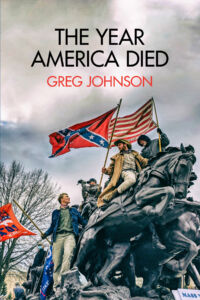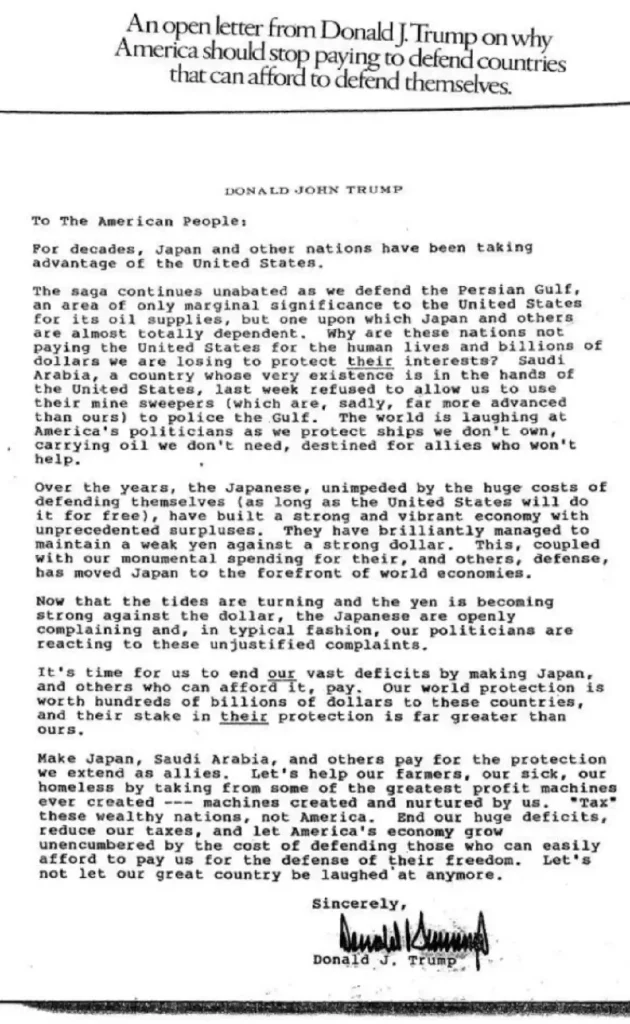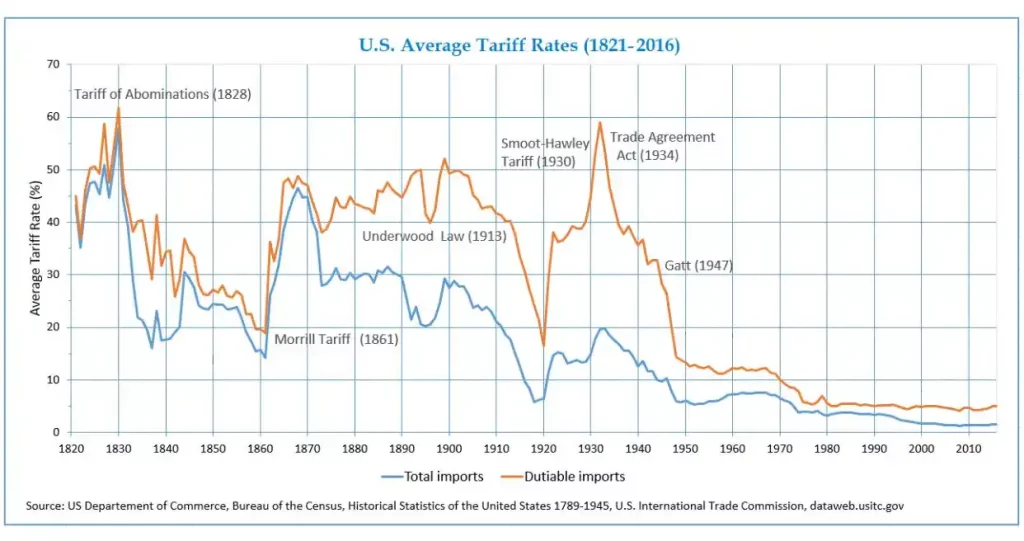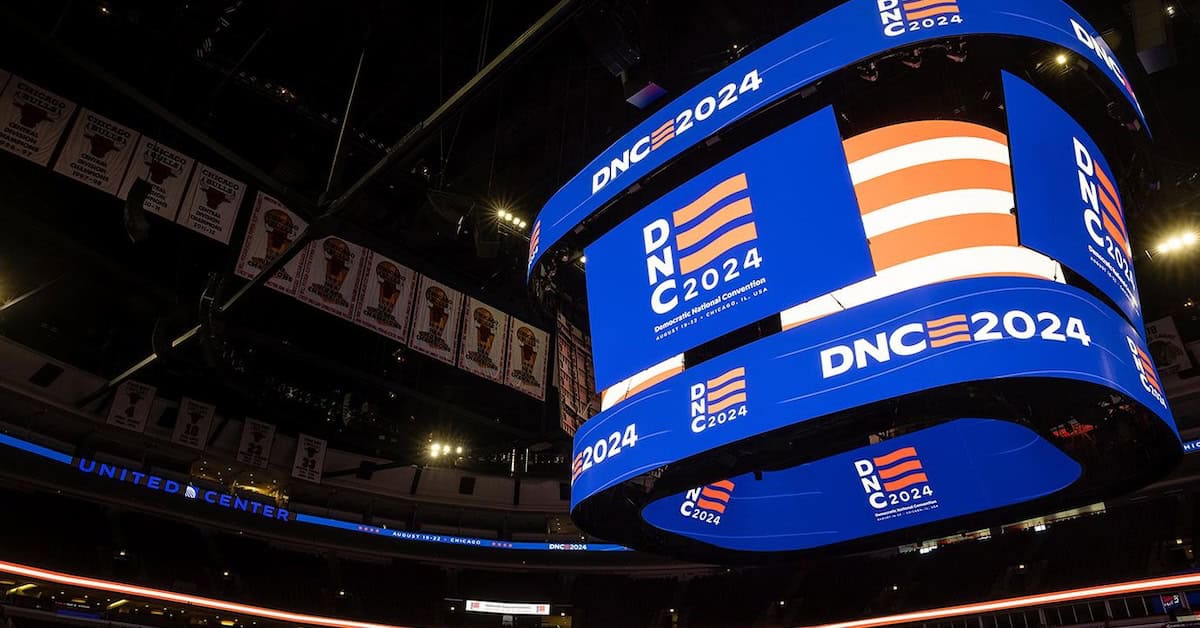America’s Free Trade Disaster and How to Fix It
Robert Lighthizer
No Trade Is Free: Changing Course, Taking on China, and Helping America’s Workers
New York: Broadway Books, 2023
See also: “Intrigue in the Indo-Pacific,” “After the Empire of Nothing,” “The Fall of the Neoliberal Order,” and “Globalism”
It is no secret that Americans have suffered under the free trade ideology which came to the fore during the Clinton years. In the 1990s, for example, every small town in Illinois had a factory. Today, those factories are closed. Across the Rust Belt, out-of-work whites are dying deaths of despair. Meanwhile, other nations have become extremely wealthy through the American political elite’s mismanagement of trade policy.
This trade imbalance is a real menace. Someone who spends more than he makes on consumer goods will become poorer over time. American society is in just such a situation and has been so since the last decade of the Cold War. In 1987, Donald Trump was one of the first prominent Americans to point this out.
On September 2, 1987, Trump ran a full-page advertisement in the New York Times which raised the fact that Japan was taking advantage of America’s protectionist economic system. Additionally, American forces were defending — at great expense and risk — their own commercial rivals. Trump wrote, “The world is laughing at America’s politicians as we protect ships we don’t own, carrying oil we don’t need, destined for allies who won’t help.”
Trump’s advertisement went against the general trend in the late 1980s. Free-trade ideologues were pushing against such protections everywhere. Once protective trade policies ended, outsourcing began in earnest. Jack Welch, the CEO of General Electric, increased the value of his company’s shares by outsourcing manufacturing to locations where labor was cheap. Welch then pressured the companies he did business with to outsource their manufacturing as well.
This worked for a time. General Electric made a great deal of money with this shell game. The price of consumer goods also fell, slightly. But many of the laid-off workers across the Rust Belt couldn’t afford the new appliances. Eventually, General Electric’s surplus capital was invested in various financial schemes. That capital was lost when the economy collapsed in 2008.
Robert Lighthizer was brought on board the Trump administration to help sort out the trade problems as United States Trade Representative. Lighthizer is an old-stock American whose ancestors fought in the American Revolution. He grew up in Ashtabula, Ohio, a port town on Lake Erie which became prosperous through shipping coal and iron ore, as well as manufacturing jobs.
These humble manufacturing firms are absolutely necessary for American prosperity. Manufacturing ordinary things creates an environment where new inventions arise. They also provide jobs in places away from the coastal financial centers, and they give people meaningful work.
Protecting ordinary manufacturing firms has been an American priority since colonial times. One of the reasons for the American War of Independence was that the British were hampering American trade with other nations, especially the Spanish colonies in the rest of the Americas. Once independence was achieved, the Federalist Party under Alexander Hamilton promoted tariffs to protect manufacturing. Hamilton’s bitter rival, Thomas Jefferson, opposed tariffs, but Jefferson eventually recognized that a trade policy which protected the economic interests of the country was essential.
Recent trading paradigms
There are two trading paradigms that one needs to understand. The first is the General Agreement on Tariffs and Trade (GATT), which came into effect in 1948. It was signed in Geneva, but the Americans involved in its creation carefully considered the interests of American manufacturing. GATT did not include members of the Soviet bloc, and there was no encouragement to offshore manufacturing to the factories east of the Urals.

You can buy Greg Johnson’s The Year America Died here.
After the Cold War ended, however, GATT morphed into the World Trade Organization (WTO), to put it in simple terms. The WTO has several structural issues that work against American interests. The administrators who work at the WTO are paid by the day, so they have incentives to keep litigation and other problems going. The staffers in the organization can be hostile to the United States, and issues in the WTO structure tend to only be resolved through litigation — and the US tends to lose such cases.
No nation has used the WTO to its benefit quite like China. Just before the end of the Cold War, President George H. W. Bush sought to normalize trade with China, the idea being that it would eventually reform into being an American-style democracy and permanent ally of the US. This was related to the the End of History hypothesis that held sway at the end of, and in the immediate aftermath of the Cold War.
The US trade relationship with China was evaluated annually. As long as there was a potential for change, no business dared to offshore manufacturing to China, since their assets could have been instantly put behind a tariff wall. But in 2000, both Bill Clinton and George W. Bush endorsed making this trade relationship permanent. Consequently, manufacturing jobs vanished from Indiana only to reappear in China.
China
No nation has risen so far and so fast as China. A century ago, China was poor and under the thumb of foreign powers. Today, China is a global superpower. White advocates of the past, including Edward Alsworth Ross and Lothrop Stoddard, predicted this, as they knew it was simply a matter of getting capital and industrial know-how to the region. The Chinese themselves would do the rest.
While the American government crusaded for “civil rights,” pushed for acceptance of various sexual deviances, and fought wars to secure Israel, the Chinese government kept its eye on the economic ball. Chinese business practices run along the following lines:
- Companies which relocate to China are required to share trade secrets.
- Once a company’s trade secrets are known, the Chinese close their American company and capture its market.
- The Chinese pirate intellectual property.
- In the WTO, the Chinese litigate against Americans at every turn. Should they lose in the WTO, they merely make cosmetic changes and continue doing whatever they want to do.
- The Chinese are also keen on acquiring data. TikTok pushes social poisons while collecting the user data of millions of foreigners.
Ireland and Europe
While the United States has lost critical industrial capabilities to China, there are other nations involved in unfair trading practices as well. The United States has run major deficits with Ireland, of all countries. Ireland’s advantage is that its government has low corporate taxes. This creates an incentive for companies to move their profits to Ireland through tricky bookkeeping methods.
The swindle works as follows:
The value of [the companies’] products can be thought of as having two parts: the actual cost of production and the value of the intellectual property in the product. . . . [Companies] place the intellectual property right to their products in that company and complete their manufacturing process in Ireland through that subsidiary. Say they are making a pill. The actual cost of making the pill might be, say, $0.50. They then export the pill to the United States (by having the Irish subsidiary sell to the same company’s US subsidiary) with an export price of, say, $10. If they sell the pill in America for $11, they would have only a dollar of taxable profit in the United States. The $9.50 in profit (the difference between the $0.50 and the $10 export price) would be taken in Ireland and subjected to the low Irish tax rate. (p. 266)
The companies justify this due to the fact that they have a subsidiary in Ireland. The rest of Europe is able to make gains in trade against the Americans through two basic institutions. The first is NATO. Germany in particular pays very little for its own defense; they rely on American forces. They also use the euro to keep their exports low. Because the euro is also used by weaker economies in Southern Europe, its value is kept artificially low, thereby making German goods cheaper to sell. The Europeans also use value added taxes and environmental regulations to keep American goods priced out of the market, or unable to enter at all.
NAFTA
Another blow to the American economy was the North American Free Trade Agreement (NAFTA). The deal was controversial when it was first announced, and Ross Perot ran for President by campaigning against NAFTA twice in the 1990s. Donald Trump was elected in part to end the agreement, but it proved impossible to completely withdraw from it since too many companies in Texas and the US South were already relying upon it.
Consequently, as Trade Representative Lighthizer looked to reform the treaty. In doing so, he was required to communicate the concerns of union organizers, CEOs, and customs officials across three countries. He found that getting the lobbyists out of the room often lowered the temperature and led to compromises. The key thing was to make Mexico’s labor laws roughly equal to American ones, at least in terms of pay, and then update the terms of the agreement which were made under 1990s conditions but which hadn’t adapted to current circumstances.
Lighthizer found that Nancy Pelosi was as keen to update NAFTA as Trump was. Pelosi had voted for NAFTA, but later realized it was a mistake. The negotiations involving the Democratic members of Congress had no leaks and were carried out with professionalism, all while Pelosi and her gang were attempting to tear down Trump. The resulting new trade agreement was the United States–Mexico–Canada Agreement (USMCA), which kept what was good about NAFTA while removing what was bad. It can also be updated.
There remains a long way to go to get the American economy back on track. Lighthizer has many suggestions in his book on how to deal with China in particular, as well as America’s important neighbors in North America. Regulation of trade in the interests of American workers and industry is an enormous task which requires constant effort. Lighthizer himself worked 18-hour days while in office. Getting the best out of trade involves understanding the concerns of vital stakeholders, eliminating ideologues, and classifying the data so that select tariffs can be applied on goods and enforced by customs agents quickly. Most importantly, Lighthizer frankly states that no nation will change its trading policies with the United States unless the Americans are in a position to apply some sort of pressure on it.
* * *
Counter-Currents has extended special privileges to those who donate at least $10/month or $120/year.
- Donors will have immediate access to all Counter-Currents posts. Everyone else will find that one post a day, five posts a week will be behind a “paywall” and will be available to the general public after 30 days. Naturally, we do not grant permission to other websites to repost paywall content before 30 days have passed.
- Paywall member comments will appear immediately instead of waiting in a moderation queue. (People who abuse this privilege will lose it.)
- Paywall members have the option of editing their comments.
- Paywall members get an Badge badge on their comments.
- Paywall members can “like” comments.
- Paywall members can “commission” a yearly article from Counter-Currents. Just send a question that you’d like to have discussed to [email protected]. (Obviously, the topics must be suitable to Counter-Currents and its broader project, as well as the interests and expertise of our writers.)
To get full access to all content behind the paywall, please visit our redesigned Paywall page.






